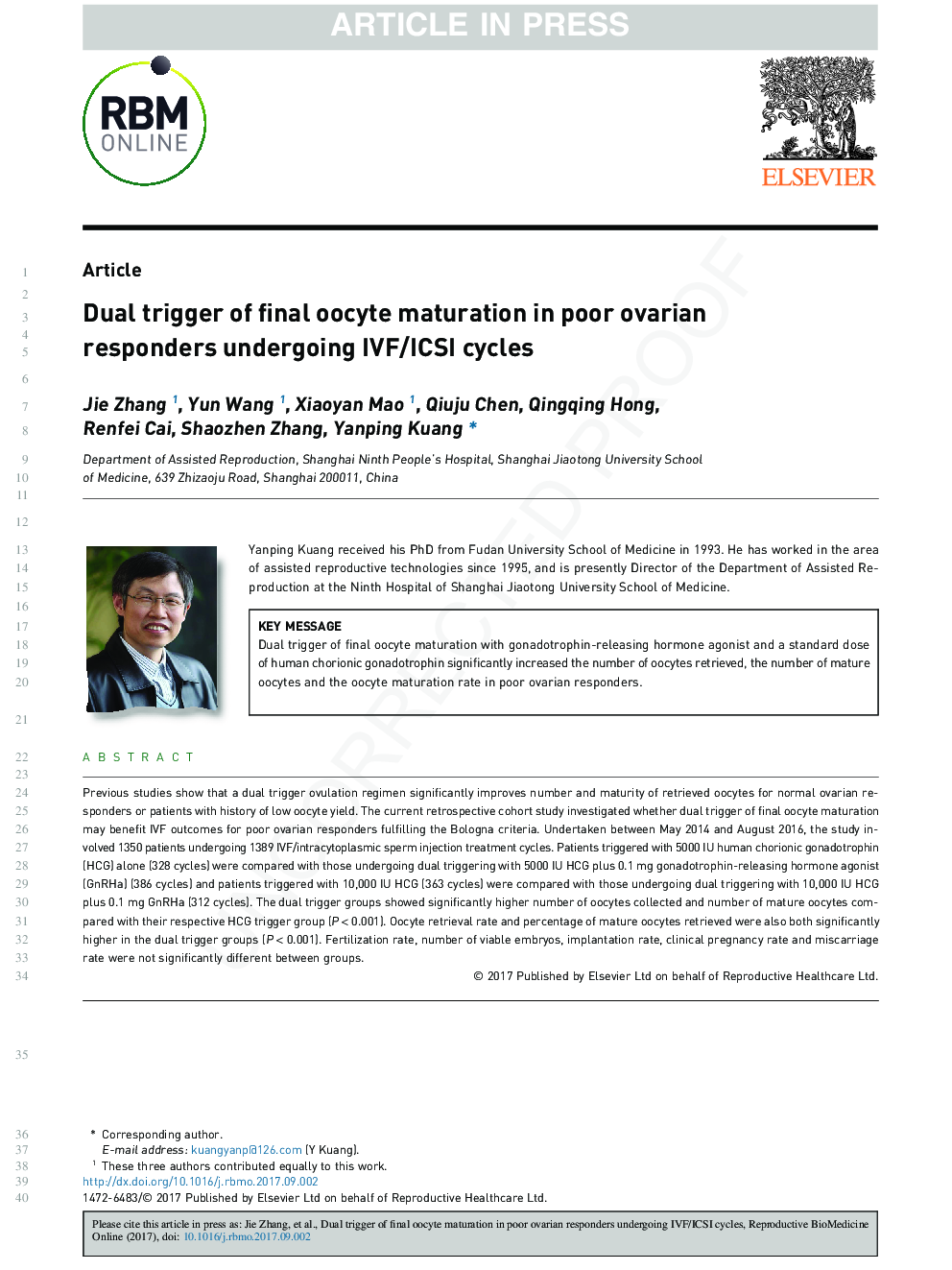| Article ID | Journal | Published Year | Pages | File Type |
|---|---|---|---|---|
| 8784123 | Reproductive BioMedicine Online | 2017 | 7 Pages |
Abstract
Previous studies show that a dual trigger ovulation regimen significantly improves number and maturity of retrieved oocytes for normal ovarian responders or patients with history of low oocyte yield. The current retrospective cohort study investigated whether dual trigger of final oocyte maturation may benefit IVF outcomes for poor ovarian responders fulfilling the Bologna criteria. Undertaken between May 2014 and August 2016, the study involved 1350 patients undergoing 1389 IVF/intracytoplasmic sperm injection treatment cycles. Patients triggered with 5000âIU human chorionic gonadotrophin (HCG) alone (328 cycles) were compared with those undergoing dual triggering with 5000âIU HCG plus 0.1âmg gonadotrophin-releasing hormone agonist (GnRHa) (386 cycles) and patients triggered with 10,000âIU HCG (363 cycles) were compared with those undergoing dual triggering with 10,000âIU HCG plus 0.1âmg GnRHa (312 cycles). The dual trigger groups showed significantly higher number of oocytes collected and number of mature oocytes compared with their respective HCG trigger group (P < 0.001). Oocyte retrieval rate and percentage of mature oocytes retrieved were also both significantly higher in the dual trigger groups (P < 0.001). Fertilization rate, number of viable embryos, implantation rate, clinical pregnancy rate and miscarriage rate were not significantly different between groups.
Related Topics
Health Sciences
Medicine and Dentistry
Obstetrics, Gynecology and Women's Health
Authors
Jie Zhang, Yun Wang, Xiaoyan Mao, Qiuju Chen, Qingqing Hong, Renfei Cai, Shaozhen Zhang, Yanping Kuang,
